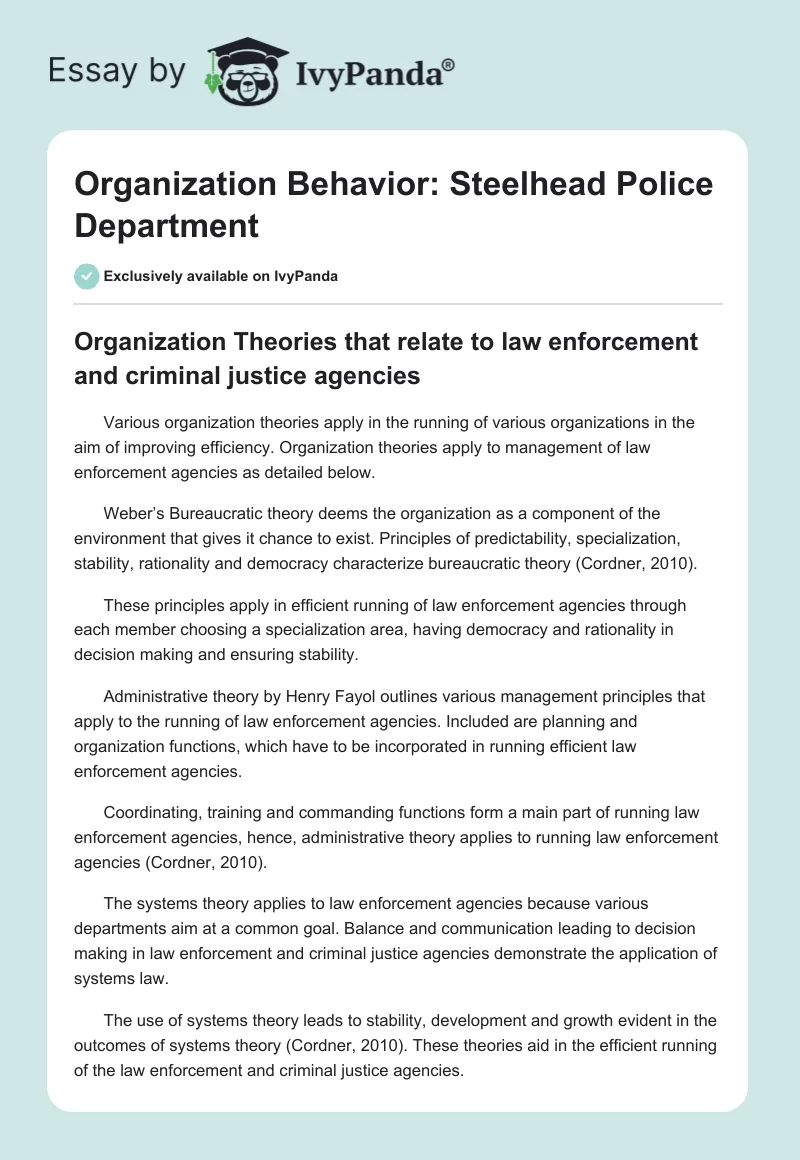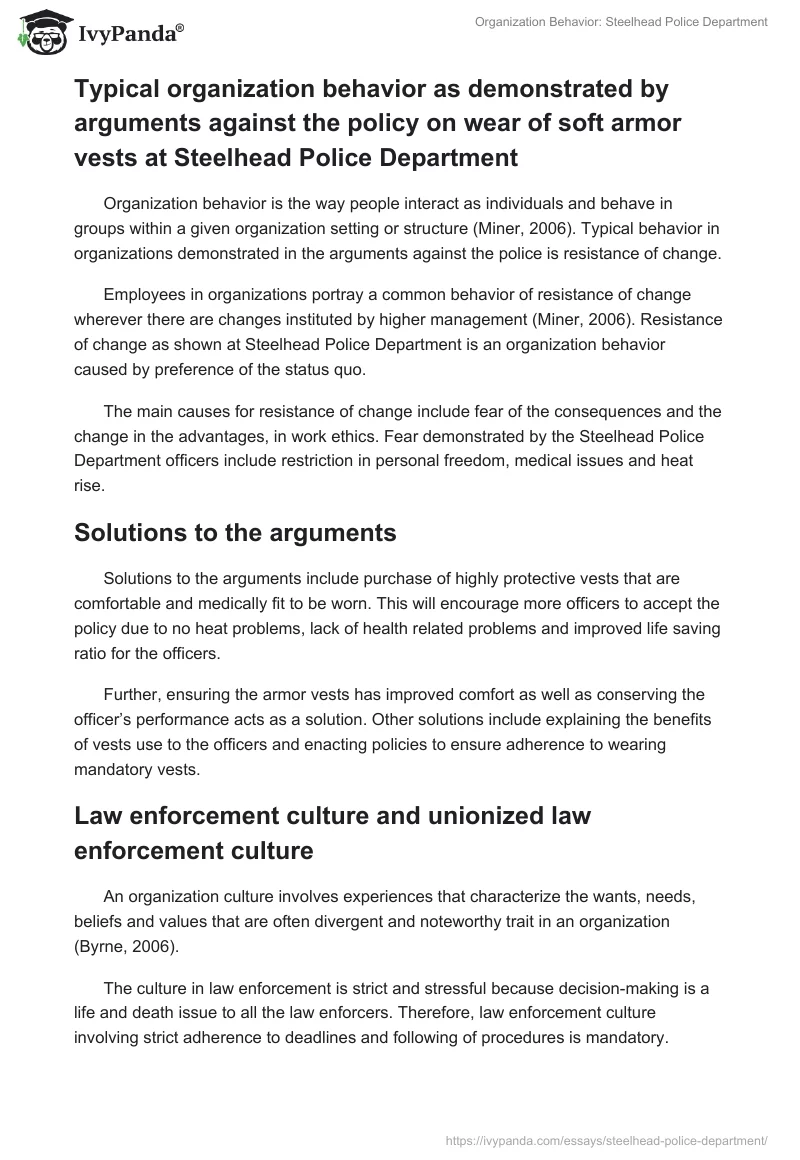Organization Theories in Law Enforcement and Criminal Justice Agencies
Various organization theories apply in the running of various organizations in the aim of improving efficiency. Organization theories apply to management of law enforcement agencies as detailed below.
Weber’s Bureaucratic theory deems the organization as a component of the environment that gives it chance to exist. Principles of predictability, specialization, stability, rationality and democracy characterize bureaucratic theory (Cordner, 2010).
These principles apply in efficient running of law enforcement agencies through each member choosing a specialization area, having democracy and rationality in decision making and ensuring stability.
Administrative theory by Henry Fayol outlines various management principles that apply to the running of law enforcement agencies. Included are planning and organization functions, which have to be incorporated in running efficient law enforcement agencies.
Coordinating, training and commanding functions form a main part of running law enforcement agencies, hence, administrative theory applies to running law enforcement agencies (Cordner, 2010).
The systems theory applies to law enforcement agencies because various departments aim at a common goal. Balance and communication leading to decision making in law enforcement and criminal justice agencies demonstrate the application of systems law.
The use of systems theory leads to stability, development and growth evident in the outcomes of systems theory (Cordner, 2010). These theories aid in the efficient running of the law enforcement and criminal justice agencies.
Typical Organization Behavior at Steelhead Police Department
Organization behavior is the way people interact as individuals and behave in groups within a given organization setting or structure (Miner, 2006). Typical behavior in organizations demonstrated in the arguments against the police is resistance of change.
Employees in organizations portray a common behavior of resistance of change wherever there are changes instituted by higher management (Miner, 2006). Resistance of change as shown at Steelhead Police Department is an organization behavior caused by preference of the status quo.
The main causes for resistance of change include fear of the consequences and the change in the advantages, in work ethics. Fear demonstrated by the Steelhead Police Department officers include restriction in personal freedom, medical issues and heat rise.
Solutions to the Arguments
Solutions to the arguments include purchase of highly protective vests that are comfortable and medically fit to be worn. This will encourage more officers to accept the policy due to no heat problems, lack of health related problems and improved life saving ratio for the officers.
Further, ensuring the armor vests has improved comfort as well as conserving the officer’s performance acts as a solution. Other solutions include explaining the benefits of vests use to the officers and enacting policies to ensure adherence to wearing mandatory vests.
Law Enforcement Culture and Unionized Law Enforcement Culture
An organization culture involves experiences that characterize the wants, needs, beliefs and values that are often divergent and noteworthy trait in an organization (Byrne, 2006).
The culture in law enforcement is strict and stressful because decision-making is a life and death issue to all the law enforcers. Therefore, law enforcement culture involving strict adherence to deadlines and following of procedures is mandatory.
Physical characteristics that depict the culture in law enforcement agencies include badges, uniforms, patrol cars and guns. Personal values that characterize law enforcement culture include integrity, competence, commitment; honor and teamwork.
The culture of the unionized law enforcement officers is that common of unions, hindrance and resistance to change due to numbers (Byrne, 2006). Their high numbers give them decision-making powers, which hinder change in an organization.
References
Byrne, M., & Rebovich D. (2007). The new technology of crime, law and social control. New York: Criminal Justice Press.
Cordner, G., W., & Scarborough, K., E. (2010). Police administration (7th ed.). Newark, NJ: LexisNexis/Anderson Publishing.
Miner, B. (2006). Organizational Behavior 3: Historical Origins, Theoretical Foundations, And the Future. New York: M.E. Sharpe.

